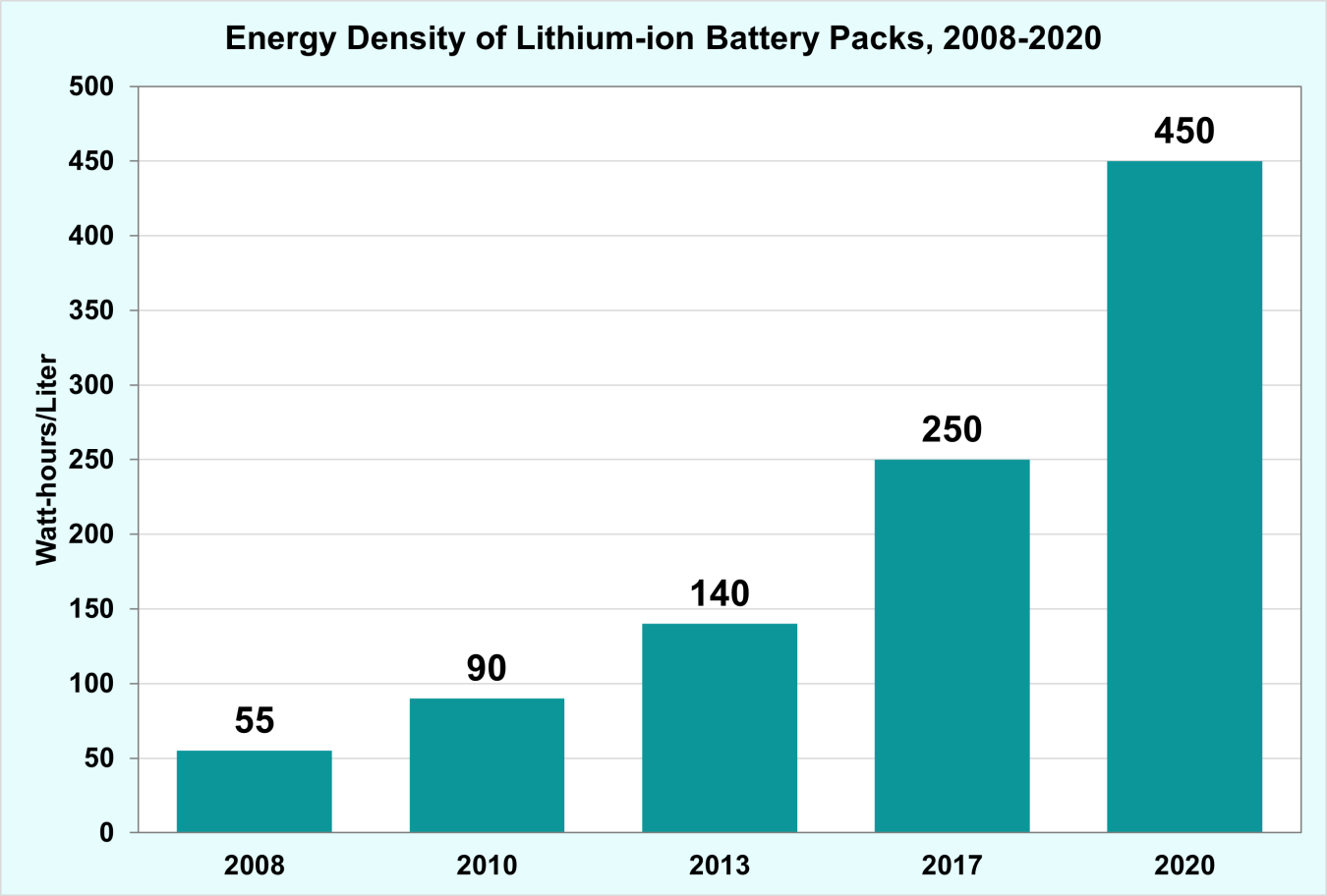Volumetric energy density refers to the amount of energy that can be contained within a given volume.
April 18, 2022Volumetric energy density refers to the amount of energy that can be contained within a given volume. Increasing the volumetric energy density of batteries allows electric vehicles (EVs) to travel further without increasing the size of the battery pack. Conversely, it can allow an EV to travel the same distance with a smaller battery pack, thus saving space, weight, and manufacturing costs. Given the enormous benefit of increasing the energy density of batteries for EVs, there has been heavy investment in battery development by the Department of Energy and private industry that has yielded impressive gains. In 2008, lithium-ion batteries had a volumetric energy density of 55 watt-hours per liter; by 2020, that had increased to 450 watt-hours per liter.

Source: Nitin Muralidharan, Ethan C. Self, Marm Dixit, Zhijia Du, Rachid Essehli, Ruhul Amin, Jagjit Nanda, Ilias Belharouak, Advanced Energy Materials, Next-Generation Cobalt-Free Cathodes – A Prospective Solution to the Battery Industry's Cobalt Problem, January 2022.

